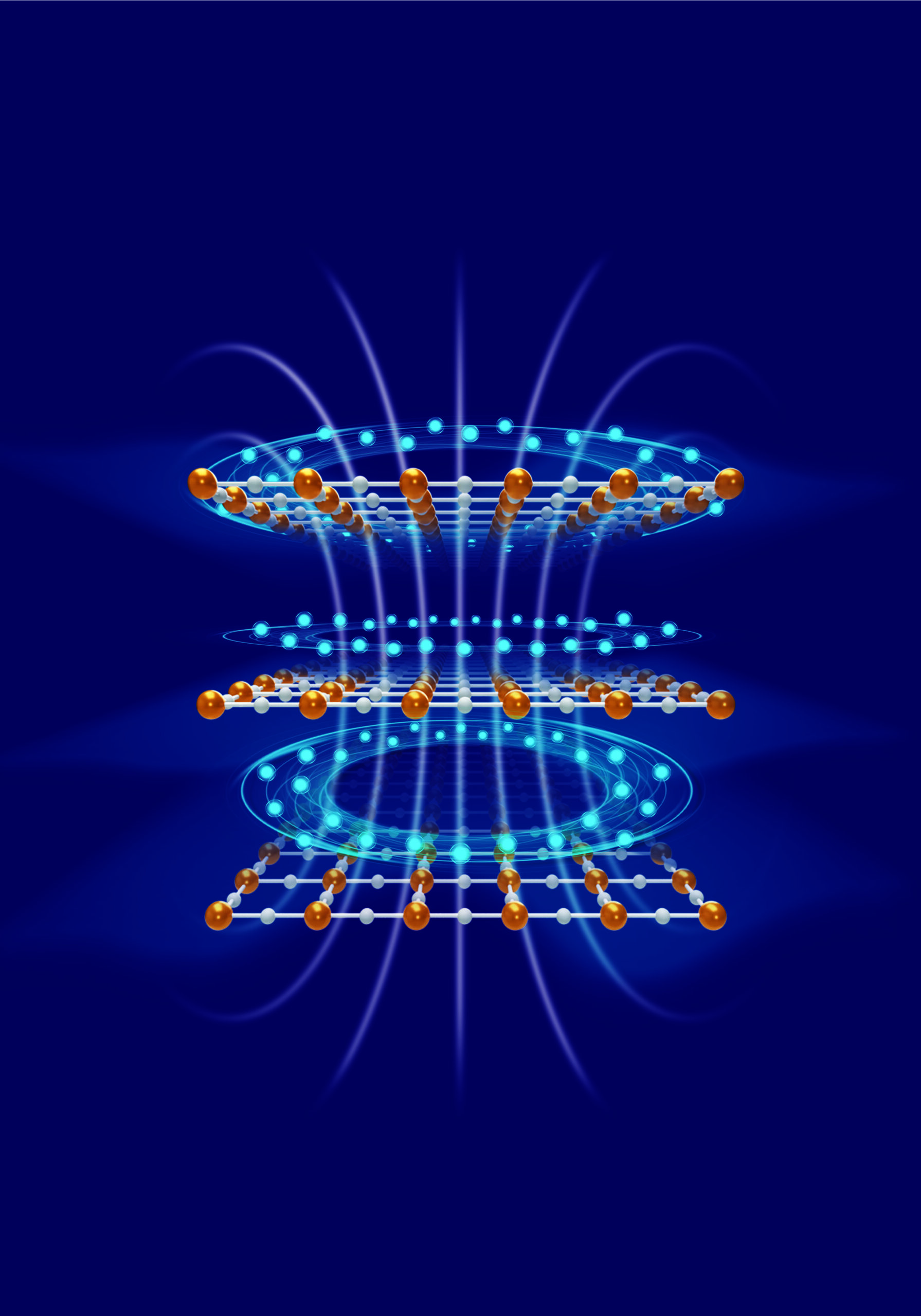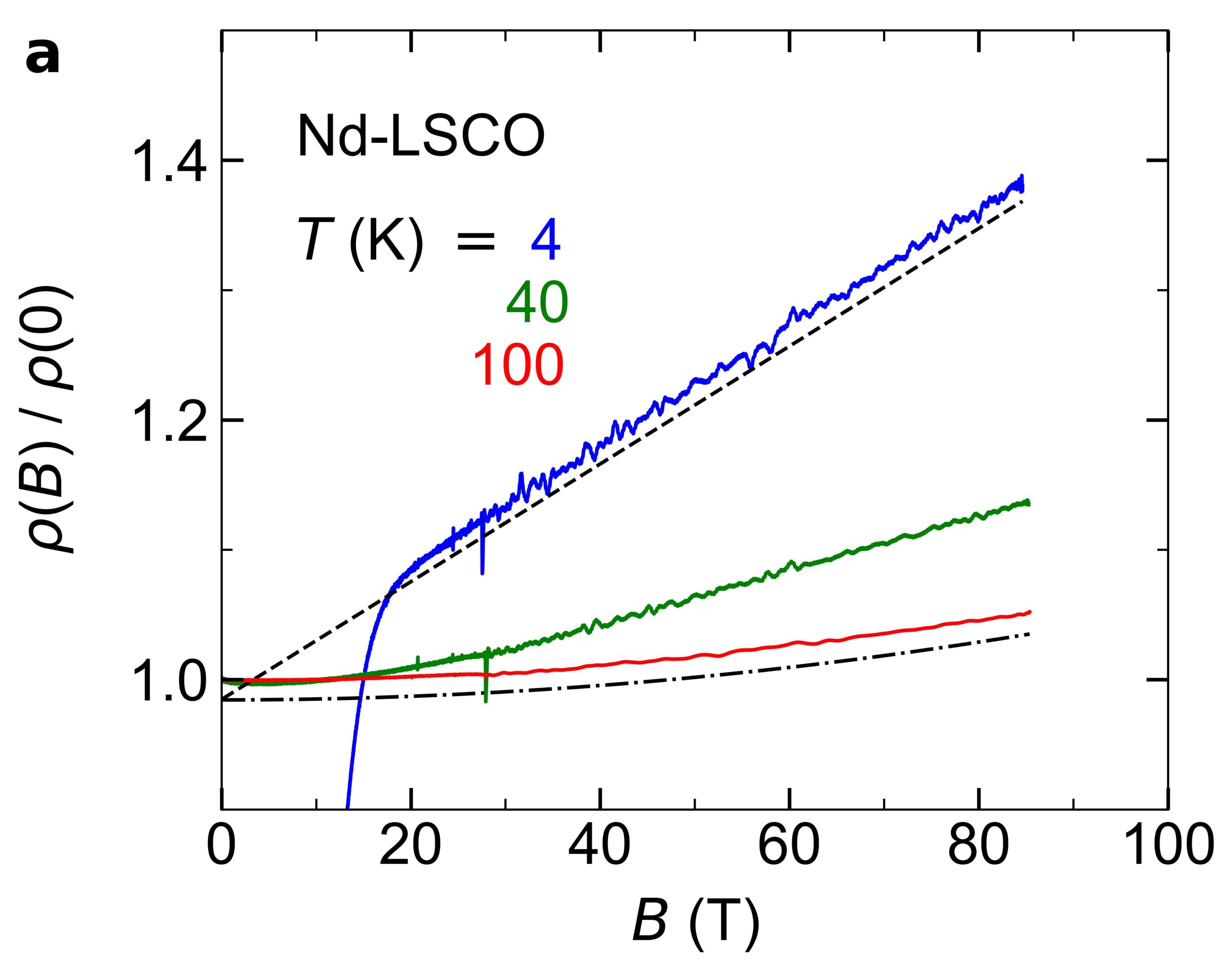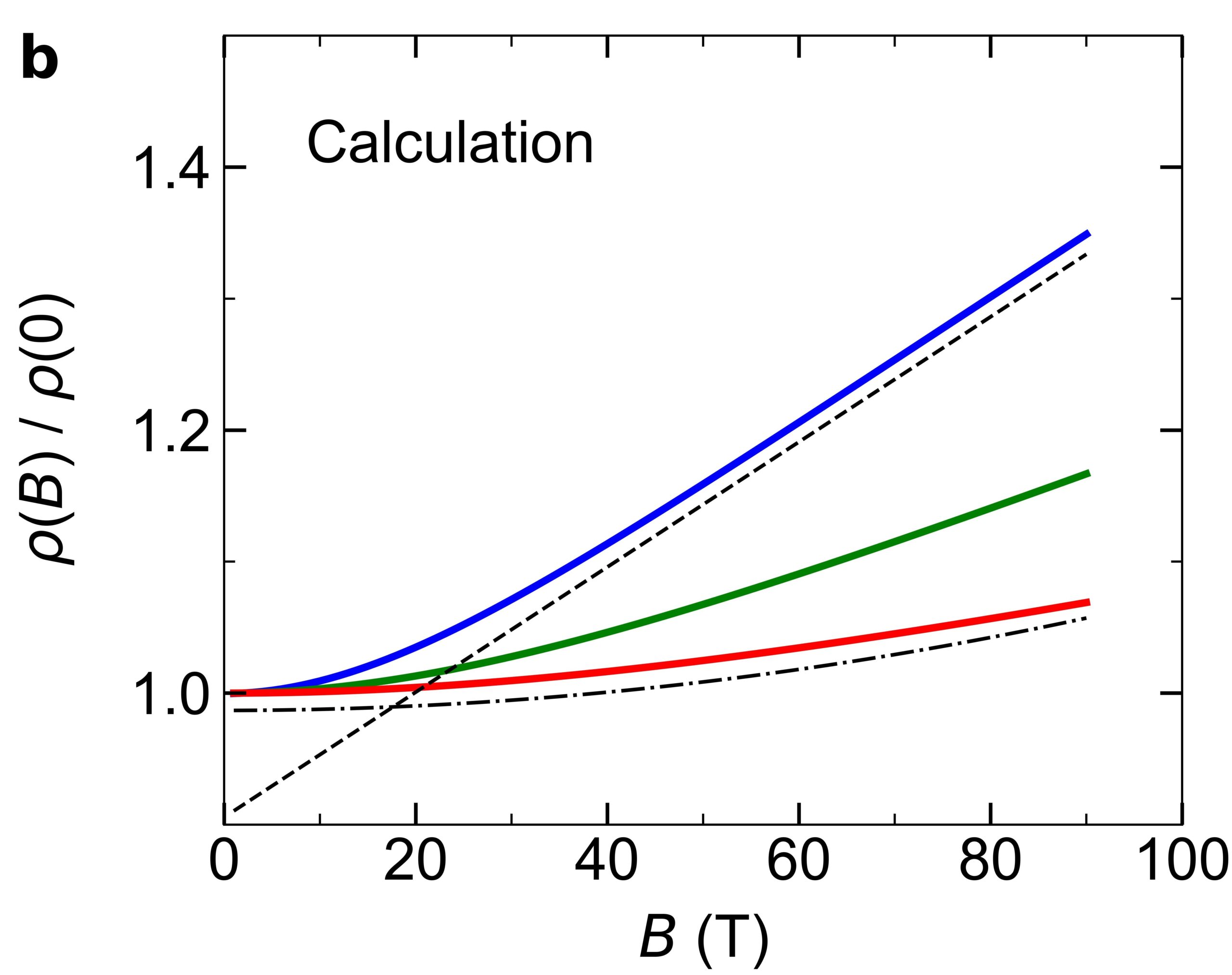Amirreza Ataei and Louis Taillefer, Université de Sherbrooke, Canada, Cyril Proust and David Vignolles, LNCMI-Toulouse.
In certain materials called “strange metals”, the electrical resistivity follows a perfectly linear temperature dependence at low temperature, in contrast to the standard quadratic dependence expected from standard Fermi-liquid theory. Remarkably, it has recently been shown that electrons in these strange metals undergo collisions with each other at a rate which is set by Planck’s constant. This intriguing phenomenon, dubbed “Planckian dissipation”, appears to be a universal property of strange metals, and it remains a fundamental puzzle. The question we asked ourselves is this: how are electrons undergoing Planckian dissipation influenced by a magnetic field B? Recent experiments on strange metals revealed that the electrical resistivity exhibits a B-linear dependence at low temperature, in contrast to the standard quadratic dependence expected of conventional metals. Is this anomalous B-linear resistivity another facet of Planckian dissipation? We carried out a series of high-field experiments at the LNCMI in Toulouse to measure the field dependence of the resistivity, or magnetoresistance (MR), of two cuprate superconductors – Nd-LSCO and LSCO – at a hole doping (p = 0.24) such that their electronic state is in the strange-metal regime. The experiments were mostly done in a configuration where the magnetic field is applied normal to the copper-oxide planes of the material (see Figure 1). We observed a B-linear dependence at low temperature, which evolves into a B-quadratic dependence at high temperature, as displayed in Figure 2a for Nd-LSCO. We then calculated the MR expected from conventional Boltzmann transport theory given the scattering rate that was previously measured for Nd-LSCO at p = 0.24 in a recent study of the angle-dependent magnetoresistance (ADMR). The results of this calculation are shown in Figure 2b. We see that the calculations reproduce well and quantitatively the measured MR. We find that the origin of the B linear MR in Nd-LSCO and LSCO is linked to a strong in-plane anisotropy of the elastic scattering rate. We conclude that Planckian dissipation is anomalous in its temperature dependence, but not in its field dependence and the scattering rate does not have a magnetic-field dependence. We hope that our work contributes to a better understanding of Planckian dissipation.
Figure 1  Figure 2
Figure 2 

Figure 1: Sketch of electrons (cyan) moving in orbits within the copper-oxide planes of a cuprate material (Cu atoms in bronze, O atoms in silver) when a magnetic field is applied normal to the planes. Credit: Impakt Scientifik
Figure 2: Measured and calculated magnetoresistance (MR) in the cuprate superconductor Nd-LSCO at a hole doping p = 0.24, plotted as ρ(B)/ρ(0) vs B, for J || a and B || c, at various fixed temperatures, as indicated. (a) Isotherms measured up to 85 T, for T = 4 K (blue), 40 K (green), and 100 K (red). The MR at 4 K is seen to be linear in field above ~about 40 T, whereas the MR at 100 K is quadratic, as emphasized by the linear (dashed) and quadratic (dashed dotted) lines. (b) Calculated MR using the parameters for Nd-LSCO extracted from a prior ADMR study (Grissonnanche et al., Nature 595, 667 [2021]), for the same three temperatures.
Electrons with Planckian scattering obey standard orbital motion in a magnetic field, A. Ataei, A. Gourgout, G. Grissonnanche, L. Chen, J. Baglo, M-E. Boulanger, F. Laliberté, S. Badoux, N. Doiron-Leyraud, V. Oliviero, S. Benhabib, D. Vignolles, J.-S. Zhou, S. Ono, H. Takagi, C. Proust, and L. Taillefer, Nat. Phys. 18, 1420 (2022).
https://www.nature.com/articles/s41567-022-01763-0
Contact: Seyed.Amirreza.Ataei@USherbrooke.ca Louis.Taillefer@USherbrooke.ca






